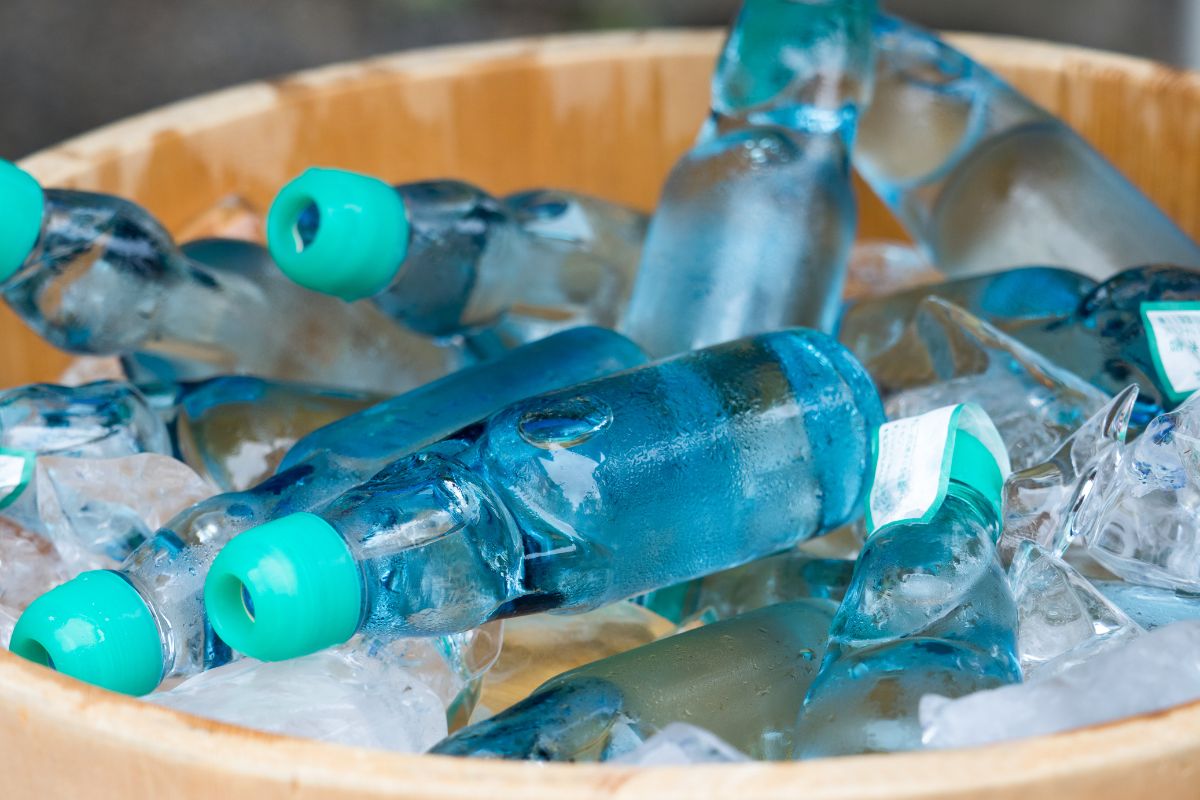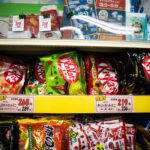Ramune is a Japanese soft drink brand known for its distinctive red color. The company has released several flavors over the years, but none of them have ever been considered truly unique.
What is the secret behind Ramune’s success?

In Japan, Ramune was originally sold only in bottles. As time went on, the company added other packaging options, such as cans and cartons. Today, Ramune is sold in nearly every country around the globe.
Ramune is famous for being the first soft drink to sell in a bottle. This innovation helped the company become a global powerhouse. Nowadays, Ramune sells more than 100 million bottles per year.
That’s an average of one bottle every second! This just proves how popular the drink Ramune is around Japan and why you should try it for yourself!
Ramune is also well-known for its catchy jingle that plays when you open a bottle. The song is so popular that it’s even used by other companies like Coca-Cola. It’s safe to say that this song makes up part of Japanese culture.
History Of Ramune
The story of Ramune begins with the founder of the company, who named his new beverage after himself: Kintaro Ishihara. He started selling his drinks in 1919, but he didn’t start using the name “Ramune” until 1941.
This is a typically good and solid beginning to the history behind how the drink brand began, as most great brands out there have a similar start.
Ramune comes in two varieties: Regular Ramune and Super Ramune. Both varieties come in an orange-colored bottle with a white label.
The regular version contains sugar, while the super version does not. The regular version is often referred to as simply “Ramune” in Japan.
The word “Ramune” is derived from the English word “lemonade”. The original recipe for Ramune called for lemons, water, and yeast.
Some modern recipes call for additional ingredients like vitamin C or calcium. Today Ramunes come in many flavors, including Melon, Strawberry, Orange, and Blueberry.
The most popular flavor is the original “Ramune” flavor; a refreshing lemon-lime flavor that has remained largely unchanged since its introduction.
The Ramune logo is composed of two circles connected at their centers. There are many theories about why the company chose this symbol.
Some people believe that the circles represent the sun, while others think they stand for the letters “R” and “M” combined. Still, others think that the shape represents the number 5.
Today, Ramune is still owned by the same family and is distributed by Kirin Brewery Company. In fact, Ramune is now produced right next door to where it all began.
How Do You Open A Bottle Of Ramune?

To begin, start with removing the cap from the very top of your soda bottle. There should be a plastic feeling ring that sits very loosely around the very top of your soda bottle.
Take off this plastic type of ring and then place it on a flat surface. Pull out the plastic ring and pull it away from the top of the ramune soda bottle.
You will then see the direct top half of your ramune soda marble sitting roughly just inside the bottle.
Put the topper directly onto the top of your marble and then press down firmly until this marble drops into its chamber. Some bottles will actually have two small grooves on one of the sides.
These grooves will help guide the marble back into its original position. If you let the marble roll toward them, it will not roll any further and block the flow.
What Flavor Is Original Ramune?
Ramune is a soft drink made by a Japanese founder. You may have seen clear Ramune bottles, but there are actually several flavors. These flavors are called “clear” because they are not colored like regular Ramune.
There are four main flavors: lemon-lime, melon, coconut, and orange. If you see a clear Ramune bottle, then it could mean that it is any one of those flavors.
Ramune has an interesting history. It started out as a drink called “Mekura” in Japan. The name came from the word “lemon” in Japanese. In the early 1900s, the company changed its name to “Lemon Suntory”.
Then in the 1960s, the company made a deal with Coca-Cola to produce a beverage called “Coca-Cola”. After that, the name was changed back to “Ramune”. Nowadays, Ramune is produced in many countries around the world.
Who Are The Original Makers Of Ramune?
Hatakosen is the main manufacturer, and they are a Japanese drink manufacturer, founded in 1881. They produce many types of drinks, including Ramune, plums soda, and ginger ale.
Their flagship product is the Hatakosenni, a mix of green tea and milk.
Hatakosens is an international company, founded in 1881. It sells products under brands such as Umiya, Ramune, and Suntory. Its headquarters are located in Osaka.
Is There Caffeine In Ramune Original Flavors?
Caffeine is a chemical compound that increases alertness, improves mood, and reduces fatigue. Some studies suggest that caffeine may help prevent cancer and heart disease.
However, caffeine is also associated with side effects including headache, nervousness, insomnia, palpitations, increased urination, and diarrhea.
Drinking too much caffeine can cause dehydration, tremors, anxiety, irritability, and stomach cramps. Caffeine is an alkaloid derived from the seeds of the kola tree.
It’s added after the fact because it gives Ramune its energy boost. The FDA requires caffeine levels to stay below 0.02%.
Is There Alcohol In Ramune Original Flavors?
Ramune is not a very well-known drink. You might not even have heard of it before reading this article. But let us tell you about what it actually is.
Ramune is a soft soda that doesn’t contain any alcohol. It’s basically a carbonated version of lemonade. There are many types of Ramune, each containing slightly different flavorings. If you like lemonade, then Ramune is probably your kind of thing.
Final Thoughts
Ramune is a unique soft drink. It is sweet, sour, and tangy. It’s a great way to start your day!
We hope you enjoyed learning more about Ramune in our fantastic article all about the flavorsome drink and what’s so great about the original flavor!
- 16 Best Websites To Watch Japanese Movies With English Subtitles - May 11, 2023
- Is ZIPAIR The Best Airline For Traveling To Japan? - May 11, 2023
- Ryu Murakami Vs Haruki Murakami – Which One Should You Read? - May 11, 2023








